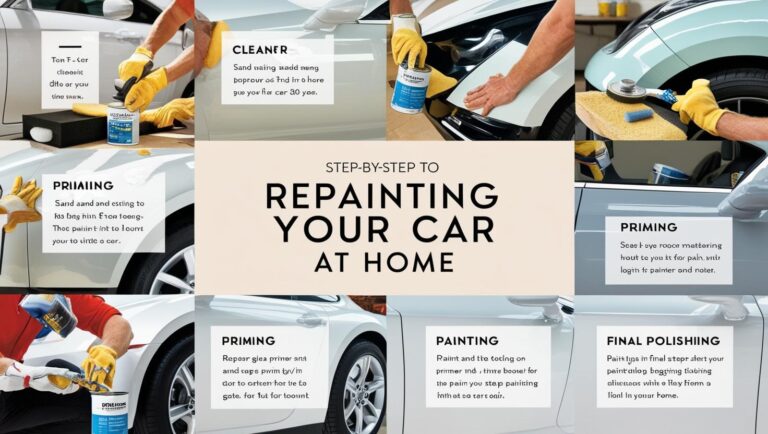Repainting your car at home can be a rewarding experience, allowing you to breathe new life into your vehicle while avoiding the steep costs associated with professional paint jobs. Whether you’re looking to restore your car’s original color, change it completely, or touch up some unsightly scratches, painting your car at home requires patience, precision, and the right tools. Here, we provide a comprehensive guide to help you navigate the process, ensuring your car looks as sleek and polished as if it had just rolled off the assembly line.
Master the Art of Car Repainting at Home
Repainting a car at home is a meticulous task that requires careful preparation and a keen eye for detail. Before even considering picking up a spray gun or brush, gather all necessary equipment and materials. You will need sandpaper, masking tape, plastic sheeting, a well-ventilated workspace, and, of course, high-quality automotive paint and a primer. Obtaining the right color match is crucial; most vehicles have a color code that can be found on the inside of the driver’s door. This ensures that your new paint layer will seamlessly blend with the original hue.
Once you’ve assembled your materials, the first practical step is to thoroughly clean your vehicle. Washing the car helps remove dirt, grease, and wax that can interfere with the paint’s adhesion. After washing, sanding the car’s surface is essential to create a smooth canvas. Pay special attention to any rust spots or surface imperfections, as these must be addressed to achieve a flawless finish. Once sanding is complete, wipe down the car with a clean, dry cloth to remove any dust or residue.
Next, focus on ensuring your workspace is adequately prepared. Painting outdoors carries the risk of contaminants, so finding a garage or workshop where you can control the environment is ideal. Cover the floor and any areas of the car you don’t want to paint with plastic sheeting and masking tape. Good lighting is also crucial, as it helps you see the vehicle’s surface clearly and catch any potential oversights. With your workspace and materials ready, you’re set to start the painting process.
Essential Steps for a Flawless Finish
The foundation of a perfect paint job lies in the application of primer. Priming helps paint adhere better to the car’s surface and provides a consistent base color. Apply the primer in even coats, allowing sufficient drying time between each layer as recommended by the manufacturer. Patience at this stage is critical, as rushing can lead to drips and uneven coverage, ultimately affecting the final finish.
With the primer properly set, it’s time to apply the main paint. Start with a thin mist coat to establish a base, then gradually build up color with additional layers. Depending on the paint type and color, you may need several coats to achieve the desired opacity. Each coat should be given ample time to dry before the next is applied. Utilizing a consistent spraying technique is essential to prevent issues like streaking or bubbling. A steady hand and even movement across the surface will yield the best results.
After the final coat of paint has dried, the final step is to apply a clear coat. The clear coat acts as a protective layer, shielding the paint from environmental damage and giving it a glossy finish. Similar to the paint, the clear coat should be sprayed evenly, with careful attention paid to maintaining consistent coverage. Once the clear coat has dried, buffing the surface with a polishing compound will bring out the shine and remove any minor imperfections. Repainting a car at home is no small task, but with meticulous attention to detail and adherence to these steps, you can achieve a professional-grade finish.
Repainting your car at home can be a challenging but immensely gratifying endeavor. By mastering the art of car repainting and following essential steps for a flawless finish, you can transform your vehicle and enhance its aesthetic appeal. This journey not only rejuvenates your car’s appearance but also imparts a sense of achievement and personal satisfaction. With careful preparation, the right tools, and plenty of patience, anyone can tackle a car painting project and come away with a stunning result. Whether you are a novice or a seasoned DIY enthusiast, this guide serves as a roadmap to success for your next automotive project.


















